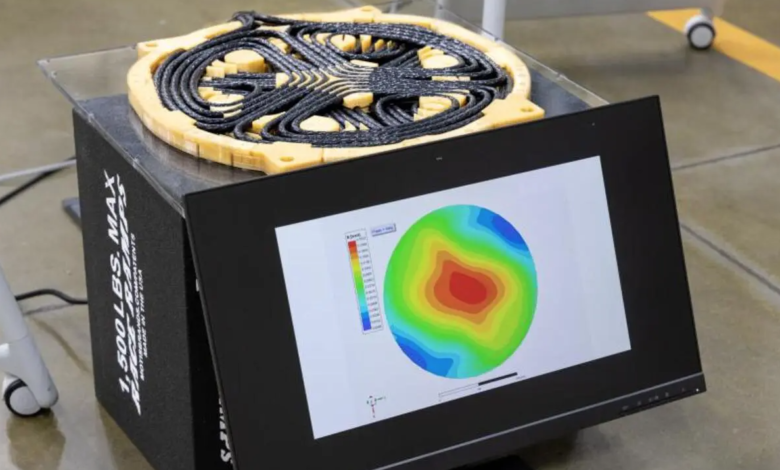EV Wireless charging: Efficiency record, 96% to 100 kw

Developed technology with power density 8-10 times higher
– A new technology tested at the Oak Ridge National Laboratory (ORNL) sets the EV wireless charging world record, a charging mode that has not yet taken off. US researchers have managed to create an induction charging plate for electric vehicles that guarantees a very high power density and efficiency even with small dimensions. How? Thanks to multiphase electromagnetic coupling coils that generate rotating electromagnetic fields.
“We have achieved the highest power density in the world for a wireless charging system for this class of vehicles,” explains Omer Onar of ORNL. “Our technology achieves power densities 8-10 times higher than conventional coil technology and can increase battery charge status by 50% in less than 20 minutes”.
Solar panels in space, wireless photovoltaic is in orbit and works
96% efficiency for ORNL EV wireless charging
The technology was tested on an electric Hyundai Kona and guaranteed 100 kW EV wireless charging power. Although previous tests – always at ORNL – had reached power around 120 kW always with wireless technology, the result is important (and better) for some reasons.
First, charging efficiency. The ORNL test dissipated just 4% of the energy. It is an extremely low value, lower than even the best ones guaranteed today by conventional cable charging. For example, tests performed by recharging a Tesla Model Y Performance, which has an 81 kWh battery, showed a charging consumption of 92.2 kWh, that is, an efficiency of about 84%. ORNL technology reaches 96%. The second reason: the size. The coil that guarantees this super-fast EV wireless charging measures just 35.5 cm in diameter. Dimensions that facilitate the adoption of technology on a commercial scale.
In 2021, the global size of the electric vehicle wireless charging market was estimated by Straits Research at $14 million in 2021 and, analysts estimated, would reach a value of $229 million by 2030, with a compound annual growth rate (CAGR) of 36.4% between 2022 and the end of the decade. New estimates of 2023 speak instead of a market volume of 1279 million dollars in 2030 and a CAGR of 48%, a forecast that incorporates as a brake factor just the charging efficiency lower than 90-95% guaranteed by the cable.





